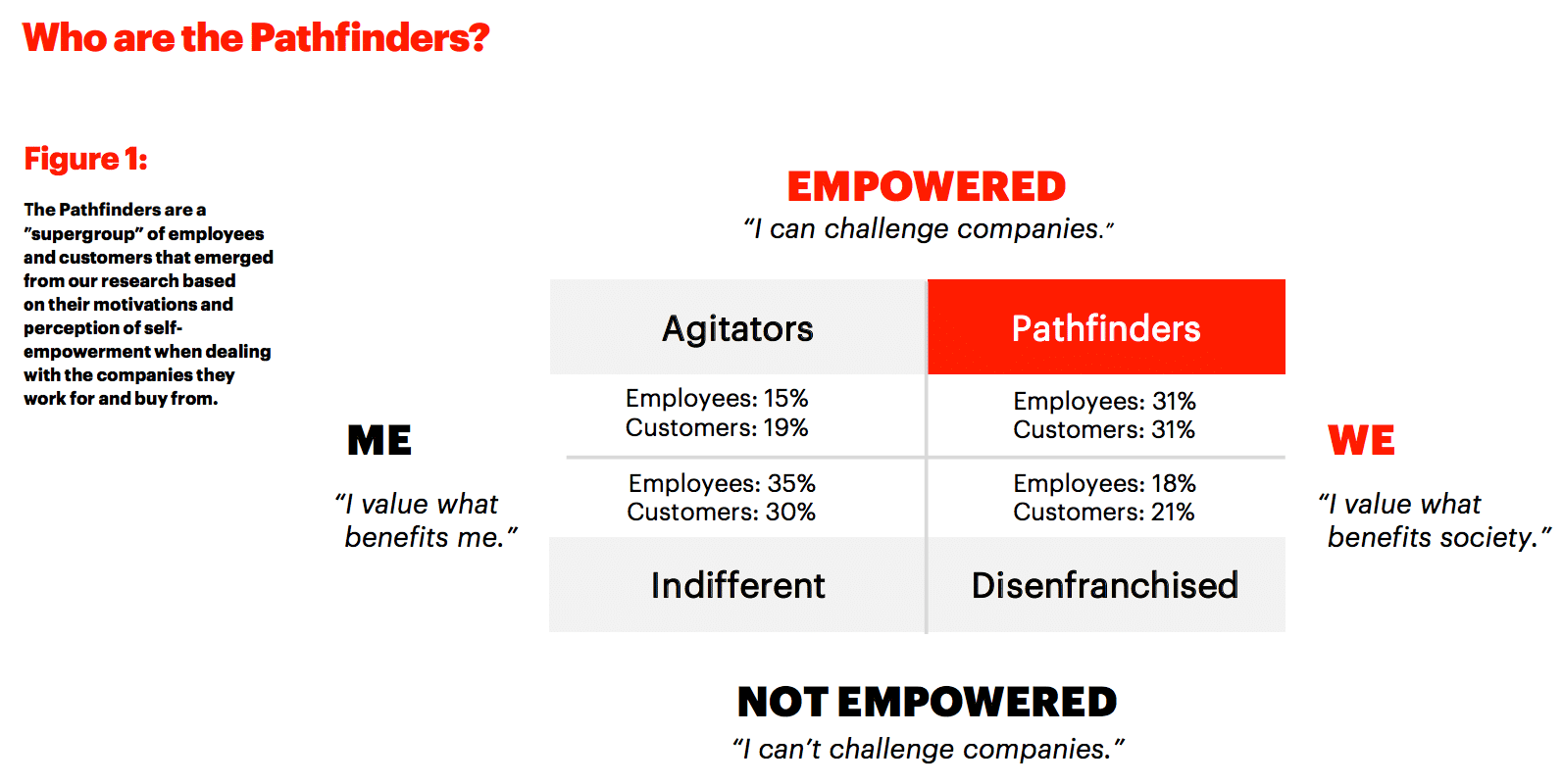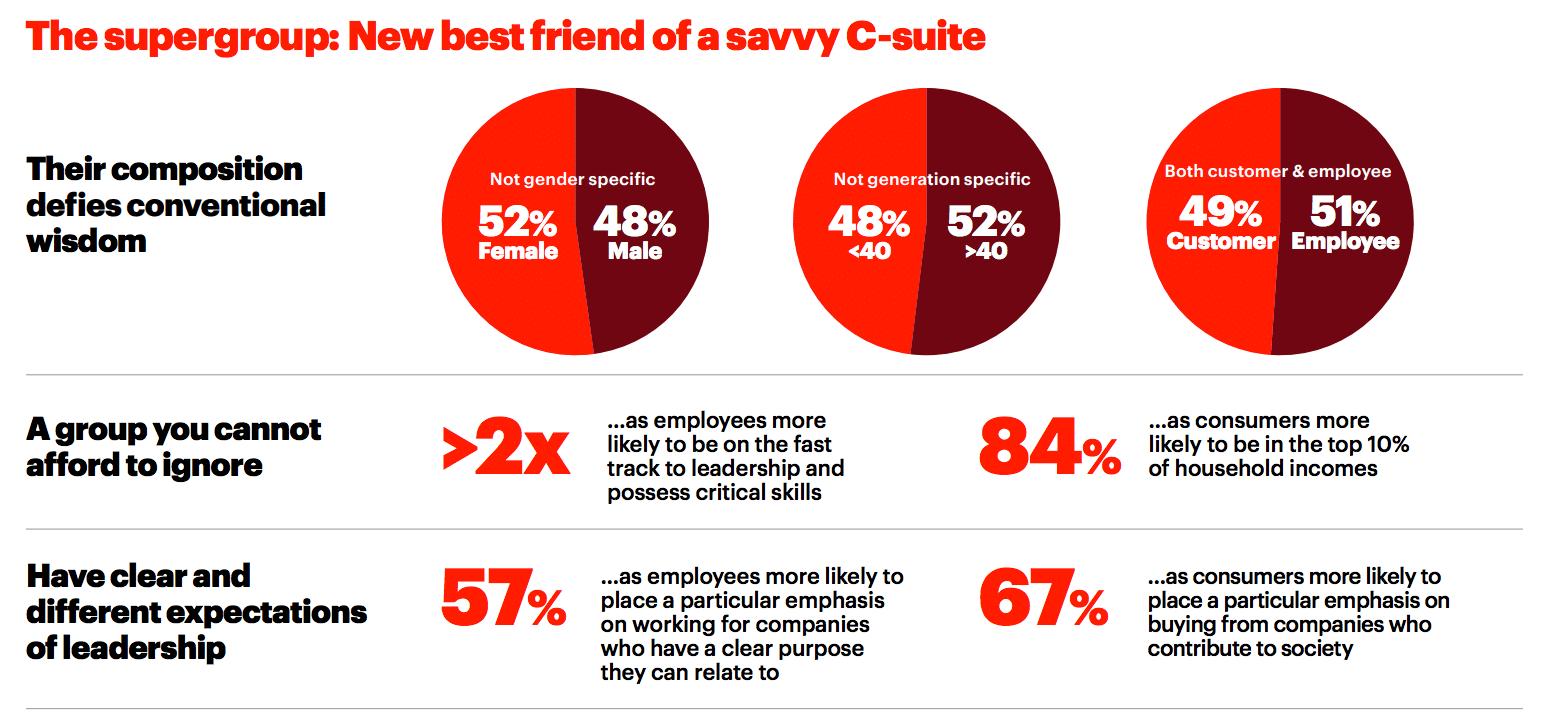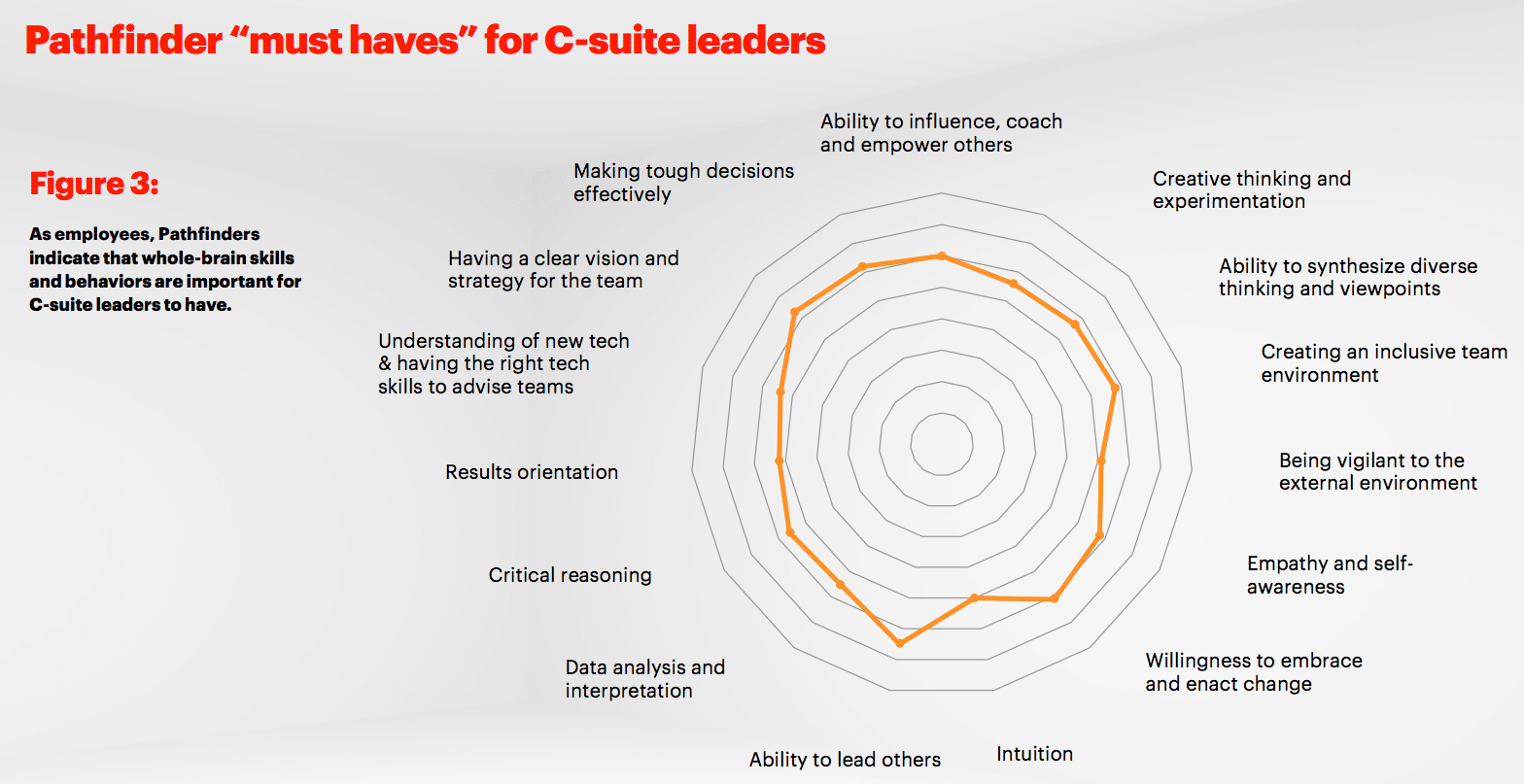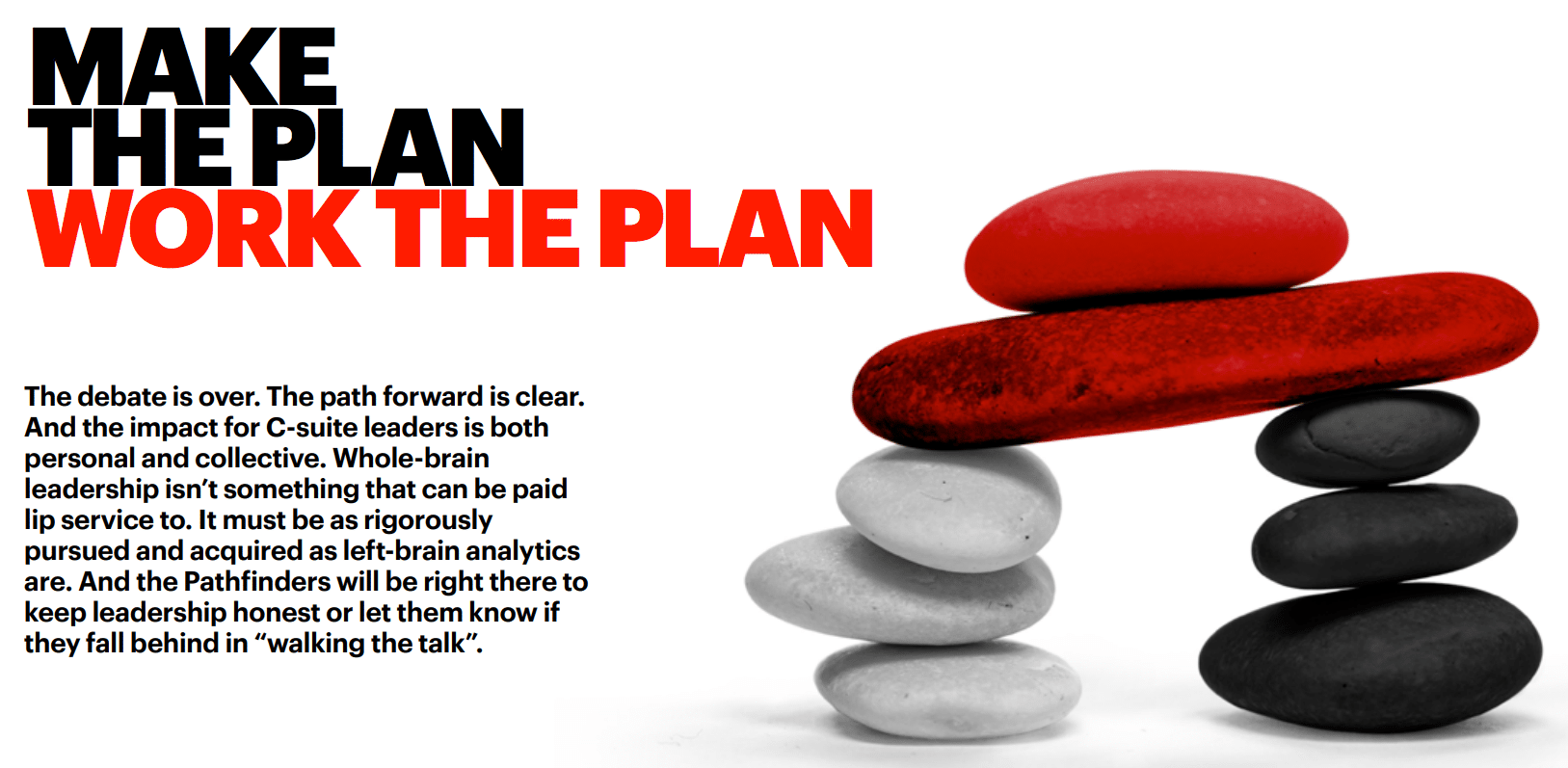With societal, cultural, environmental, economic and technological demands piled on them, CEOs and other company execs are being perpetually kept on their toes in the modern era of business. And now, new research from Accenture reveals an emerging supergroup of employees and consumers is adding intense pressure to thesealready-challenged C-suite leaders—and further threatening company growth.
With nearly three-quarters of these powerful stakeholders believing they have the potential to destroy company value in the long term, the C-suite understands the need to respond. Accenture Strategy’s new study, Whole-Brain Leadership: The New Rules of Engagement for the C-suitereport identifies a new influential group of stakeholders with the power to either destabilize or uplift businesses.
Combined with other disruptive forces, like emerging technologies and new market entrants, this group is motivating the C-suite to implement a human-centered approach to leadership. This “whole-brain” approach balances “left” (scientific) brain skills with increasingly valued “right” (creative) brain skills, such as empathy, innovation and intuition.
“Pressures are compounding on the C-suite like never before. The complexity and intensity of disruption is challenging executives to transform leadership styles and strategies on their journey to achieve competitive agility,” said Mark Knickrehm, group chief executive at Accenture Strategy, in a news release.
An emerging supergroup
This powerful new group of employees and consumers identified in the study—dubbed the ‘Pathfinders’—represent an additional pressure to the C-suite and share a common mindset about how leadership needs to change. Their demographics defy convention, spanning evenly across gender and generations from Gen Z to Baby Boomer.
Pathfinders are five times more likely to take action in numbers against their employer—and 61 percent have already taken disruptive action by voicing their disappointment as a customer. Seventy-nine percent of Pathfinders say that social media has increased the power of their voice in the companies where they work, and 71 percent say it has enabled them to influence the behavior of the companies they buy from.
“The spending power and professional influence of this group, combined with their fluency of digital technologies, has given them a disproportionate influence which company leaders can no longer ignore,” said Katherine LaVelle, managing director of global Talent & Organization North America lead at Accenture Strategy, in the release. “Instead, C-suite leaders should harness their energy and passion to accelerate the type of change that is needed to reposition themselves and their companies for success.”
New style of leadership required
Pathfinders are demanding a new type of leader to engage their passion and capabilities, one that has a strong balance of human-centered and analytics-led skills. The majority (89 percent) of today’s C-suite hold business school, science or technology degrees and have honed left-brain skills—such as critical reasoning, decision-making and results-orientation. While these skills will always be valuable, C-suite leaders recognize the need to strengthen their right-brain skills for a well-rounded whole-brain skillset. Sixty-five percent say that right-brain skills are their weakest and only 8 percent report their organizations using a whole-brain approach today.
In today’s volatile business environment, this balance is no longer an option. C-suite leaders recognize this reality with 82 percent saying their organization intends to use a whole-brain approach in the next three years. The companies that have already adopted a whole-brain approach see a positive bottom-line impact and realize on average 22 percent higher revenue growth and 34 percent higher profitability.
“C-suite leaders are aware of the challenges that face them at a macro-economic level, company level and now on a deeply personal level,” said Peter Lacy, senior managing director at Accenture Strategy, in the release. “Reskilling to change the style of leadership, by combining data, creativity and a human-centered approaches, is now crucial to building enduring businesses that generate stronger growth and profitability.”
The C-suite must adopt a whole-brain approach to leadership and secure the future of their companies through:
Addressing the skills gap
Changing the mix of leadership skills at the top of companies will help address the current skills gap. C-suite leaders recognize this need for change, with nine in 10 C-suite executives already taking action by using organic and inorganic ways to tackle the problem. Over half (55%) of companies surveyed are already re-skilling C-suite members, and 46 percent are bringing in new talent from outside their organization to address the challenge.
Relinquishing some traditional leadership
Harnessing the power of the Pathfinder group is essential. By embracing them, allowing their voices to be heard and insights acted upon, the C-suite will gain allies and re-credential their leadership. By leveraging these natural agents of change, companies will benefit significantly as Pathfinders are two times more likely to be motivated to give their best to their employer, and twice as likely to choose a more expensive brand because they prefer what it stands for.
Driving change deep and wide
Proactively ingraining data-led and human-centered skills into the leadership of organizations is crucial to longevity and competitiveness.
The C-suite must build these balanced skills and use them at both the organizational and individual level. This will enable senior executive teams to leverage a whole brain approach to solve higher value problems that today’s combinatorial effects of disruption present.
The research is based on interviews with 200 C-suite executives and a survey of more than 11,000 employees and consumers globally.








